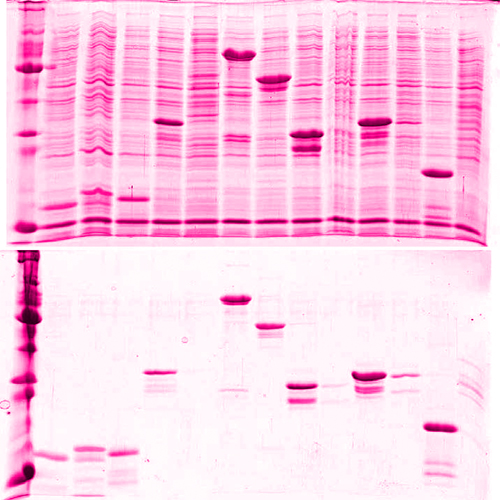Screening of fusion partners for high yield expression and purification of bioactive viscotoxins
17-Oct-2008
Protein Expression and Purification, 2008, 64, 1, 16-23 published on 17.10.2008
Protein Expression and Purification, online article
Protein Expression and Purification, online article
Viscotoxins are small cationic proteins found in European mistletoe Viscum album. They are highly toxic towards phytopathogenic fungi and cancer cells. Heterologous expression of viscotoxins would broaden the spectrum of methods to be applied for better understanding of their structure and function and satisfy possible biopharmaceutical needs. Here, we evaluated 13 different proteins as a fusion partners for expression in Escherichia coli cells: His6 tag and His6-tagged versions of GB1, ZZ tag, Z tag, maltose binding protein, NusA, glutathione S-transferase, thioredoxin, green fluorescent protein, as well as periplasmic and cytosolic versions of DsbC and DsbA. The fusion to thioredoxin gave the highest yield of soluble viscotoxin. The His6-tagged fusion protein was captured with Ni2+ affinity chromatography, subsequently cleaved with tobacco etch virus protease. Selective precipitation by acidification of the cleavage mixture was followed by cation exchange chromatography. This protocol yielded 5.2 mg of visctoxin A3 from 1 l of culture medium corresponding to a recovery rate of 68%. Mass spectrometry showed a high purity of the sample and the presence of three disulfide bridges in the recombinant viscotoxin. Proper folding of the protein was confirmed by heteronuclear NMR spectra recorded on a uniformly 15N-labeled sample. Recombinant viscotoxins prepared using this protocol are toxic to HeLa cells and preserve the activity differences between isoforms B and A3 found in native proteins.











